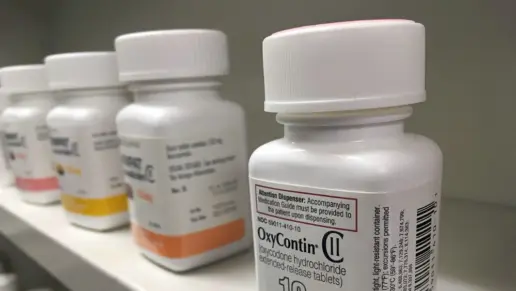Substance Use Disorder Treatment Options
Drug and alcohol addictions are significant problems in the U.S. According to this report by the Substance Abuse and Mental Health Services Administration, 48.5 million Americans ages 12 and older had a substance use disorder during the previous year, showing a growing need for addiction treatment.
Of those, 28.9 million had an alcohol use disorder, 27.2 had a drug use disorder, and 7.5 million people had addictions to both alcohol and drugs. Marijuana was reported as the most used illicit drug at 21.8% while 3.1 % of illicit drug users used opioids and 0.3% used fentanyl.
Fortunately, there are many options for treating alcohol use disorder or drug use disorders. When choosing an alcohol or drug rehab, it is important to understand the various treatment options and how they differ. Identifying and assessing these factors is key to choosing the best rehab to meet your needs.
Understanding Addiction Treatment Options
Substance abuse treatment options include inpatient care and outpatient care. Inpatient care takes place in a hospital, clinic or a freestanding residential facility and includes overnight stays for the duration of treatment.
It is appropriate for those who need around the clock supervision and monitoring. This may include people with severe substance use disorders or people with co-occurring mental health or medical conditions that require close supervision or frequent monitoring like depression, anxiety, diabetes, heart disease or other chronic conditions. Alcohol or drug detoxification is also often managed through inpatient care.
Outpatient care is appropriate for people who do not require overnight stays and round the clock monitoring. Several levels of outpatient care can accommodate a person’s needs for managing work, school or other obligations.
Substance use rehabs that provide evidence-based therapies are ideal because they use techniques that have been proven to be successful.
Additional therapies such as holistic or experiential therapies, recreational therapies and therapies based on demographics or lifestyle such as men’s and women’s only groups, LGBTQ+ groups, or faith based groups are often used to supplement evidence based treatments and tailor the rehab experience to individual needs.
No one treatment or type of therapy is right for everyone. Researching different rehab facilities can help you find the rehab that has the options that are most important to you. Finding a good match increases your chances for success in rehab treatment.
Types of Drug and Alcohol Addiction Treatment
Commonly used treatments and therapies at alcohol and drug rehabs include:
Cognitive Behavioral Therapy
Cognitive behavioral therapy is an evidenced-based therapy that addresses dysfunctional and self-defeating thinking and behavioral patterns. The goal of this therapy is achieved through verbal discussions between a therapist and client. It aims to help the client recognize their unhelpful thinking and behavioral patterns.
The client uses problem solving skills to develop strategies to make different, more helpful choices. In alcohol or drug rehab, cognitive behavioral therapy might focus on identifying cues and triggers and strategizing ways to cope with them or avoid them. Cognitive behavioral therapy techniques can be used as part of individual, group, or family counseling.
Motivational Enhancement Therapy
Motivational enhancement therapy is a short term counseling technique aimed at identifying and strengthening a person’s motivations and intentions for treatment.
In drug and alcohol treatment this might involve assessing the pros and cons of rehab, helping the client gain confidence in their ability to succeed and assisting them in deciding on positive changes to make that will address their patterns of use.
Contingency Management
Contingency management involves the use of tangible rewards such as cash, gift cards or increased privileges that are provided when a goal is met. In rehab treatment rewards are used to encourage positive behaviors such as regularly attending treatment sessions or having a favorable drug screen.
12-Step Peer Group Facilitation
These groups use the 12 step model from Alcoholics Anonymous and other peer support programs to engage counseling group members in discussion and sharing. Topics in drug and alcohol rehab often include personal coping mechanisms and relapse prevention strategies. 12 step groups foster mutual support and social connection during rehab and post-treatment as well.
Mindfulness and Meditation Training
Mindfulness and meditation are techniques increasingly taught and used at addiction treatment centers. Mindfulness training increases awareness of internal mental content and helps people change habituated automatic thoughts that are unhealthy or self-defeating. Meditation training helps clients develop relaxation and encourages emotional regulation.
Medication Assisted Treatment (MAT)
Medication assisted treatment involves the use of FDA-approved medications to help manage physical and psychological symptoms associated with alcohol or drug detoxification. Medications approved for opioid use disorder include buprenorphine, methadone and naltrexone.
Medications approved for alcohol use disorder include naltrexone, acamprosate and disulfiram. Some of these medications block euphoric drug effects in the brain. Others prevent withdrawal symptoms by occupying opioid receptors. They help stabilize the brain, reducing misuse behaviors and cravings.They are used in conjunction with counseling.
Inpatient Drug Rehab vs Outpatient Drug Treatment
The choice between inpatient and outpatient rehab is often made by assessing the seriousness of a drug or alcohol addiction. Inpatient treatment is often needed for severe addiction, when a co-occurring condition is present or when 24-hour supervision is needed for any reason.
Food and lodging are provided as part of inpatient care. Inpatient drug treatment in a hospital may last for a few days or a week or two. Inpatient care in a residential facility often involves a set program schedule, where 28 to 90 day stays are typical.
Outpatient treatment does not require overnight stays and can be accessed at a clinic, a community center, a therapist’s office, or through telehealth virtual visits over the phone or internet. Outpatient drug treatment is better able to accommodate a client’s work, school or family obligations.
Outpatient rehab treatment options may include a partial hospital program which is a day long treatment program that typically provides up to 30 hours per week of treatment over five to six days. Both individual and group counseling are commonly used and programs last about three to four weeks.
An intensive outpatient program provides between nine and 30 hours of treatment per week over three to five days. Programs often last about 90 days but may run longer. General outpatient treatment programs often provide three to four hours of treatment per day, three to four days per week for about 10 weeks.
At the beginning of treatment, withdrawal symptoms can be managed via either inpatient or outpatient treatment depending on the severity of the addiction. In either case, oversight by medical staff is provided and medication dosing is monitored.
In outpatient detox treatment, the client makes regular visits to the practice location to receive medication and support. Your care team will walk you through the process and explain how to detox from alcohol or drugs safely with as few symptoms or risks as possible.
Drug Rehab Programs and Amenities
Drug rehab programs vary from functional and basic to luxurious, highly tailored, and indulgent. Luxury rehabs with amenities like fitness rooms and yoga or art studios will usually be more expensive than facilities that don’t offer these perks.
When you are evaluating different rehabs you will need to decide what level of luxury and aesthetics are important to you. Comfortable, relaxing and peaceful surroundings do impact healing. Finding the right balance of quality care and desirable amenities is essential.
Examples of therapy and relaxation amenities that may be offered in drug treatment centers near you include:
- Fitness rooms/gym
- Swimming pools
- Tennis, basketball courts
- Outdoor activities (hiking, biking)
- Massage therapy
- Acupuncture
- Nutritional therapy
- Art and music therapy
- Holistic therapies
- Meditation
- Equine therapy
- Yoga
Amenities usually only available at luxury rehabs include:
- Private rooms and baths
- Gourmet, chef-prepared meals
- Chiropractic services
- Spa treatments
- Business centers with computers, fax machines and other office equipment
Finding a Drug Rehab Near You
You should be able to assess your treatment goals, preferences and most important factors when you’re ready to begin your recovery journey. The next step is to explore and compare several different facilities.
You can browse our interactive rehab map to locate a drug rehab near you. You can search by city, state, or geographical area. Once you’ve made a decision, you can begin your journey to recovery with confidence and positive expectations.
How Long Is an Addiction Treatment Program?
Most addiction treatment programs last for 30, 60 or 90 days. There are longer programs that run for a year or more. The length of stay varies according to the severity of addiction and whether detox is required before additional treatment.
Longer stays can be helpful for more serious addictions because they allow more time for healing as well as for learning new coping skills and relapse prevention strategies.
Shorter stays cost less and may work better for people who cannot be away from their work or other commitments for a long period.
The National Institute on Drug Abuse (NIDA)’s Principles of Drug Addiction treatment standards suggest that staying in drug rehab for at least three months achieves the most successful outcomes. When assessing program options it’s advisable to enlist the aid of a doctor or therapist.
How Much Does a Rehab or Addiction Treatment Program Cost?
Costs for addiction treatment can vary from no out of pocket cost to $100,000 or more per month depending on the type of facility and treatments chosen. Some directory websites provide lists of low-cost and free rehab options and scholarships. This includes those available through nonprofit organizations including the Salvation Army and Veterans’ associations.
Private health insurance often pays some or all of drug rehab costs. In addition, Medicare and Medicaid may also cover some rehab costs.
Getting treatment for a substance use disorder is extremely important. Cost is a major factor but it shouldn’t prevent you from seeking treatment. If you research and explore options then you should be able to find affordable care that matches most of your needs and desires.
Compare Drug Rehab Facilities
Not every rehab center will offer treatment programs that fit your needs. When researching different addiction treatment options, it’s helpful to contact a few local options to compare key features such as service offerings, treatment duration, cost, insurance coverage and any other element that may factor into your decision.
Most facilities have personnel on staff who can answer your call, walk you through what to expect and help you find the best program for you.





